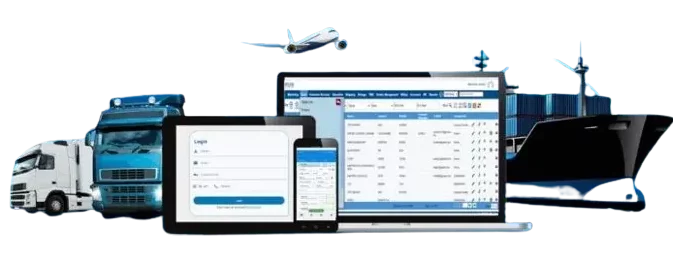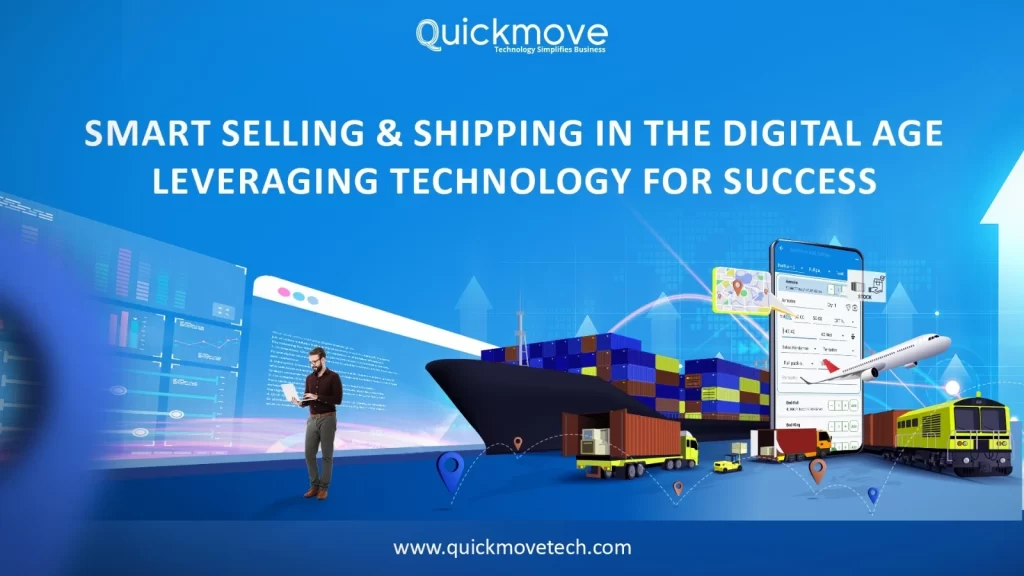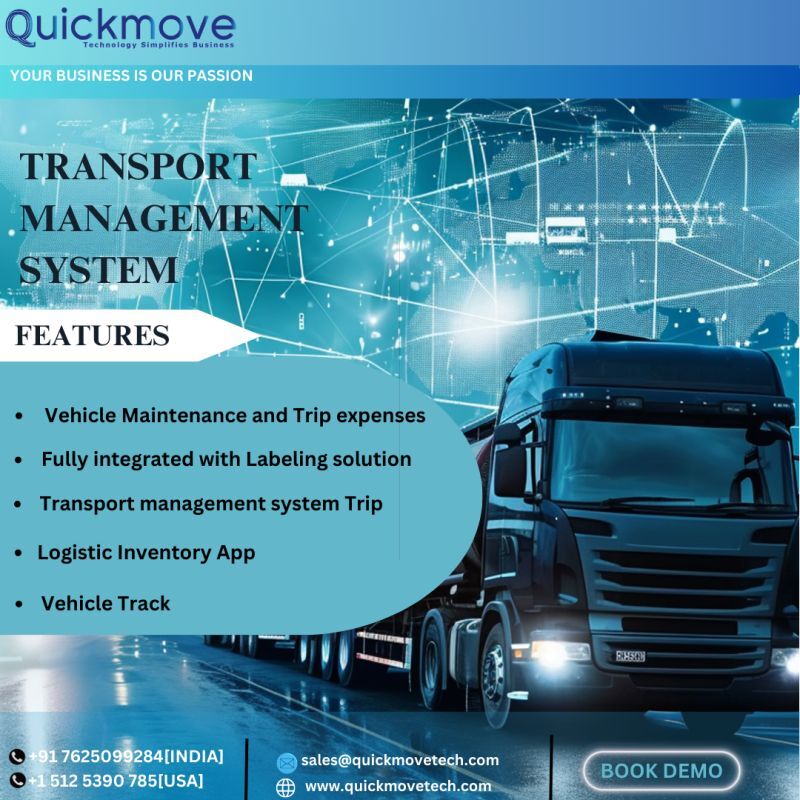In the current business world, it is not enough to have great products to be successful. Companies need to be clever when selling, managing their inventory, and shipping products to customers. This is where sound sales strategies like upselling and downselling, combined with logistics based on new technology, can prove to be game-changers. Let’s explore Console Shipments (Consolidated Shipping), Upselling, Downselling, and what Freight Forwarding Software, Warehouse Management system , and Transport Management Systems propel them.
What is a Console Shipment (Consolidated Shipping) and How Technology Drives It?
Suppose you’re shipping several small packages to separate customers, maybe within India or even overseas. Shipping them all separately would prove to be very expensive. That’s where console shipment, or consolidated shipping, excels. It’s a smart logistics tactic whereby a specialized firm, a freight forwarder, collects many small shipments from many companies and consolidates them into one large, full container or truckload. This “carpooling for packages” greatly slashes costs and increases efficiency.
But how do freight forwarders coordinate such intricate operations, monitoring hundreds or thousands of discrete parcels in one consolidated shipment? That’s where Freight Forwarding Software comes in.
Freight Forwarding Software: The backbone of consolidated shipping, Freight Forwarding Software enables freight forwarders to:
- Automate Booking & Documentation: Automate bookings from different customers, create required documents such as bills of lading, customs declarations, and manifests, all in electronic form.
- Maximize Consolidation: Look for the opportunity to consolidate similar shipments by destination, type, and transit time necessary to make the best use of containers.
- Real-time Tracking: Offer end-to-end visibility of bundled shipments so that businesses and their clients can track their products from start to finish.
- Rate Management: Seamlessly handle complex pricing structures for different routes and services to offer competitive and precise quotes.
Without strong Freight Forwarding Software, combined shipping would be a nightmare of logistics, unmanageable to implement economically or efficiently.
Upselling: Adding Value with Clever Inventory & Delivery
Now, let’s move on to increasing your sales revenue and customer satisfaction. Upselling is the art of getting a customer to purchase a higher-priced, upgraded, or premium product or service than what they originally looked at purchasing. The idea is to offer even more value while driving your average transaction higher.
Consider bundling a gaming console with a second controller and a top-selling new game, or adding more storage and a top-tier protection plan to a low-end smartphone buy.
This is how technology, or more precisely Warehouse Management and Transport Management Systems, indirectly supports effective upselling:
- Warehouse Management (WMS): A sophisticated WMS ensures you have the right products in stock to upsell.
- The Right Stuff: By showing your salespeople precise, up-to-date numbers of your inventory, a WMS tells them which of your best models or accessory kits are in fact on hand and available to sell. No more showing an upsell that you can’t fulfill!
- Efficient Picking: If a customer agrees to an upsell (e.g., purchasing a larger TV model), the WMS instructs warehouse staff to efficiently pick the correct, larger product and its applicable accessories with less mistake and faster order completion.
- Bundle Management: WMS can manage pre-configured bundles of items (e.g., a “premium package”) so picking and packing these upsell items are easy.
- Transport Management System (TMS): A TMS, which is primarily interested in delivery, plays a role towards building customer trust that is needed for upselling.
- Confident Delivery: Customers are more likely to upgrade if they believe you will accurately deliver higher-value, larger, or more complicated upsold items. A TMS helps provide confident routing and scheduling for any delivery type.
- Proof of Delivery: For more expensive upsold products, the TMS can monitor proof of delivery, providing an extra layer of security and reassurance for both the customer and business.
With an open sight of inventory on hand and a good distribution network, your salespeople can confidently present upselling opportunities in the assurance they can fulfill on the promise.
Downselling: Salvaging the Sale with Flexible Options
What if a customer is interested but your initial offer or your upsell is too expensive? This is where downselling comes in handy. Downselling is offering a less expensive alternative if a customer declines the original or upsell option. The goal is to acquire any sale, not lose the customer altogether.
For example, if the customer is unable to afford the newest top-end drone, you can present them with an older model available to sell at a discounted price, or a simple drone for beginners.
The following is the manner in which our key technologies facilitate downselling:
Warehouse Management (WMS):
- Visibility of Alternatives: A WMS allows you to quickly identify and locate alternative lower-priced products that can be of interest to a price-conscious buyer. These could be prior version products, open-box items, or lower-feature models of a product.
- Stock Rotation: For frequently downsold products (e.g., last season’s apparel), WMS helps manage their whereabouts and have them available for picking.
Transport Management System (TMS):
Low-Cost Shipping Solutions: For the products which are being downsold and could potentially have lower profit margins, a TMS would find the lowest-cost shipping solutions. This enables you to present more affordable shipping options, which can be key in making a downsell. For example, presenting standard ground shipping rather than expedited air freight on a lower-priced product.
The Power of Integration: A Holistic Approach
The real strength is unleashed when Freight Forwarding Software, Warehouse Management, and Transport Management Systems collaborate in seamless unison.
Suppose this: A customer is upsold (your CRM monitors). Your WMS knows about the order right away and allocates the premium product and pulls it effectively. Concurrently, the data is communicated to your TMS, which determines the most effective delivery route and schedules. If it’s being transported as a part of bulk consolidated shipment, your Freight Forwarding Software ensures its seamless integration and tracking within the larger container.
By integrating these powerful systems, businesses can:
- Boost Operational Efficiency: Automate processes, reduce human errors, and speed up order shipping.
- Secure Customer Satisfaction: Provide accurate content, faster delivery, and more variety, which will evoke loyalty.
- Maximize Profitability: Reduce shipping costs (through consolidation), enhance average order value (through upselling), and reduce lost revenues (through down selling).
- Gain Data-Driven Insights: The systems generate huge volumes of data which can be analyzed for optimizing sales strategies, for inventory optimization, and for optimizing delivery routes.
In effect, these technologies are no longer just back-office functions; they are now strategic assets that enable firms to be great at selling, maximize their supply chains, and deliver phenomenal value to customers, in the process driving sustainable growth. With this digital revolution, firms can confidently navigate the complexities of commerce today and maintain their edge.




